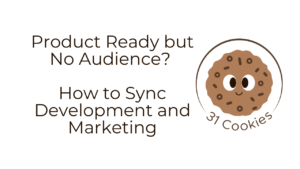“Long-form content is outdated. No one reads blogs anymore. Shorter content gets more attention.”
Sure. And my morning coffee makes me immortal. 😑
Have you ever believed in these marketing myths and wondered if people still have the patience to read long-form content?
Let’s face it—the internet is flooded with instant gratification, short videos, and bite-sized content designed to match today’s supposed short attention spans.
But is shorter always better? Not necessarily.
Let’s dive into why long-form content remains as relevant as ever and how it busts the myth that shorter content always wins.
What is long-form content?
Long-form content refers to detailed, comprehensive content that provides in-depth information on a topic. While the term often brings to mind articles of 1,000-2,000+ words, it’s not limited to blog posts. Long-form content can take many forms, including:
- In-depth articles and guides
- Ebooks and whitepapers
- Podcasts with extensive discussions
- YouTube videos and webinars
- Research reports and case studies
The essence of long-form content lies in its depth and ability to cover a subject exhaustively, no matter the medium.
Why do people think long-form content is dead
Lazy marketing. Plain and simple.
There’s a prevailing myth that long-form content is outdated. Here are some reasons why people believe this:
- Short attention spans: It’s widely assumed that audiences won’t stay engaged with lengthy content.
- The popularity of short-form platforms: TikTok, Instagram Reels, and similar platforms has led to the rise of bite-sized content.
- Resource-intensive: Creating long-form content requires time, effort, and expertise, making it a less appealing option for some marketers.
- Misconception about ROI: Many believe shorter content offers quicker results.
Benefits of Long-Form Content
Despite the myths, long-form content offers undeniable benefits. Here’s a quick comparison of the performance of long-form and short-form content:
| Metrics | Long-form content | Short-form content |
| SEO Metrics | Higher rankings, increased traffic | Quick wins but limited visibility |
| Engagement | Lower bounce rates, higher time-on-page | Higher bounce rates, fleeting attention |
| Conversions | In-depth education leads to better conversions | Often lacks depth for persuasion |
Here’s why long-form content still reigns:
Long-form grabs and keeps attention
Short-form content—tweets, Instagram reels, catchy headlines—can only do one thing—grab attention. But grabbing isn’t the goal. Retaining attention is.
When someone spends time reading your 2,000-word blog post or watching your 20-minute video, they’re not just consuming—they’re committing. They trust you enough to give you their time.
And guess what? That trust translates into loyalty, conversions, and sales.
Google loves dwell time
Let’s talk data. Google’s algorithm monitors how long users stay on a page. This is called dwell time. If people spend two, three, or even four minutes on a page, it signals to Google, ‘Hey, this content is useful!’
And guess what ranks better?
Not your 300-word fluff piece. It’s the detailed guide, the in-depth analysis, the ‘everything-you-need-to-know’ masterpiece.
Long-form content gives users reasons to stay, read, and engage.
People read long when it’s worth it
The issue isn’t length—it’s quality.
If you’re dishing out boring, generic, or redundant content, no one’s reading it, whether it’s 200 words or 2,000.
But when you craft a story, share unique insights, or provide real value? People stick around.
Depth > clickbait
Short-form content is great for quick engagement, but it rarely offers depth. You can’t solve problems or build trust in a 100-word social post. That’s where long-form content comes in.
It allows you to explore topics, explain solutions, and establish authority. The kind of depth that makes someone say, ‘This person really knows their stuff. I need to work with them.’
🔎Did You Know: Long-form content generates 8X more page views, 3X more social shares, and 9X times more leads than short-form content.
Guide to Write a Long-Form Content
Creating long-form content can feel daunting, but breaking it down into manageable steps makes it achievable and effective. Follow these detailed steps to create compelling long-form content:
- Choose a relevant topic:
- Identify topics your audience cares about by analyzing their pain points, interests, and frequently asked questions.
- Use tools like keyword research platforms or audience surveys to find high-demand topics that align with your goals.
- Research thoroughly:
- Gather information from credible sources, including industry reports, expert interviews, and reliable data.
- Dive deep into your topic to ensure you can provide unique insights and address all aspects comprehensively.
- Create a structured outline:
- Start with a clear introduction that hooks the reader and outlines what they’ll learn.
- Divide the content into logical sections with descriptive headings and subheadings.
- Plan the flow of information to ensure smooth transitions between sections.
- Write in a conversational tone:
- Use simple, relatable language to make complex ideas accessible.
- Address the reader directly, and include anecdotes or examples to keep the tone engaging.
- Incorporate engaging visuals:
- Add images, infographics, charts, and videos to illustrate key points and break up text.
- Visuals make your content more digestible and appealing to a broader audience.
- Optimize for SEO:
- Include target keywords naturally throughout the content, especially in headings and meta descriptions.
- Use internal and external links to enhance credibility and improve SEO value.
- Add alt text for images and ensure your content is mobile-friendly.
- Focus on readability:
- Use short paragraphs, bullet points, and numbered lists to make your content skimmable.
- Highlight key takeaways with bold text, summary boxes, or callouts.
- Edit and proofread:
- Review your content for grammar, spelling, and clarity.
- Read it aloud to ensure a conversational tone and smooth flow.
- Promote and update:
- Share your content across social media, email newsletters, and relevant forums.
- Regularly revisit and update your content to keep it fresh and relevant.
Challenges of Long-Form Content
While long-form content packs a punch when done right, getting there is another story entirely. Here’s what makes it a steep climb:
- Balancing depth with engagement: You must provide enough value to justify the length without drowning readers in detail. Overexplaining bores but under-explaining disappoints.
- Time-intensive research: Finding credible sources, examples, and case studies takes time. It’s easy to fall into the trap of endless research, losing focus on the writing itself.
- Maintaining reader interest: Keeping someone hooked for thousands of words demands more than good ideas. It takes dynamic storytelling, compelling structure, and an understanding of your audience’s attention span.
- Content fatigue: Halfway through, you’ll wonder if the piece is too much. Imposter syndrome creeps in, and suddenly, every sentence feels inadequate.
- SEO without overstuffing: Writing long-form often involves optimizing for keywords, but overdoing it risks turning your piece into a robotic jumble. Finding that balance is harder than it looks.
💡Pro Tips:
The real secret to long-form content? It’s not about the length—it’s about the value.
- Format it well: Use subheadings, bullet points (like these), bold text, and white space.
- Make it conversational: Write like you’re talking to a real person, not a search engine.
- Focus on storytelling: Share your unique experiences, case studies, or lessons learned.
- Be transparent: No one needs another puff piece about being the ‘best’.
- Use pull quotes, summary boxes, and bold callouts for key takeaways.
- Include tweet-length summaries at the beginning of each section to hook readers.
- Keep it skimmable by using bullet points, numbered lists, and short paragraphs.
- Write a compelling introduction and conclusion to frame your content effectively.
Case Studies Supporting the Effectiveness of Long-Form Content
Long-form content isn’t just for traditional blogs or e-commerce. It thrives in unexpected industries, too, like B2B tech companies, nonprofits, and highly technical fields. If you want to improve your digital presence and establish authority, you should invest in high-quality, detailed content.
Here’s a case study to prove it.
Study overview
This study analyzed the performance of long-form content (over 1,200 words) against short-form content (under 1,000 words) in terms of clicks, impressions, and search engine rankings. It aimed to determine the preferred format for SEO and user engagement.
Findings
| Metrics | Long-form content | Short-form content |
| Total clicks | 31 | 15 |
| Total impressions | 35,153 | 12,852 |
| Average SERP position | 43.24 | 60.4 |
Examining SEO impact across content types
Conclusion
The study found that long-form content outperformed short-form in every key metric. This demonstrates that search engines favor comprehensive, detailed articles that resonate better with audiences seeking in-depth insights.
Study overview
This research extended the focus on long-form versus short-form content performance with a broader dataset and similar evaluation metrics: clicks, impressions, and SERP rankings.
| Metrics | Long-form content | Short-form content |
| Total clicks | 333 | 14 |
| Total impressions | 89,678 | 12,461 |
| Average SERP position | 10.33 | 38.63 |
Comparative analysis of content performance
Conclusion
The dramatic difference in results underscored the effectiveness of long-form content. Articles with greater depth attracted over 300 more clicks and nearly eight times the impressions compared to short-form pieces.
Both case studies reinforce that long-form content remains a vital SEO and user engagement strategy. While short-form content is easier to produce and offers quick updates, long-form articles provide greater value, attract more traffic, and enhance online visibility.
Long-Form Content Isn’t Dead—It’s Just Misunderstood
While short-form content grabs attention, long-form content builds relationships, drives organic traffic, and converts readers into loyal customers.
In a world of fleeting impressions, long-form content offers something timeless—depth, trust, and value.
If you want to stand out, don’t shy away from going big and long. Instead, embrace the opportunity to give your audience the detailed insights they crave.
Try creating a long-form content piece that truly resonates with your audience today.
Still think long-form content is old news? Let’s prove otherwise! We’ll help you create long-form pieces that really deliver. Let’s chat—your free consultation with 31Cookies is just a click away!









One Response
Great article. Although you are preaching to the converted it will certainly help me with the ongoing debate I have with my clients.